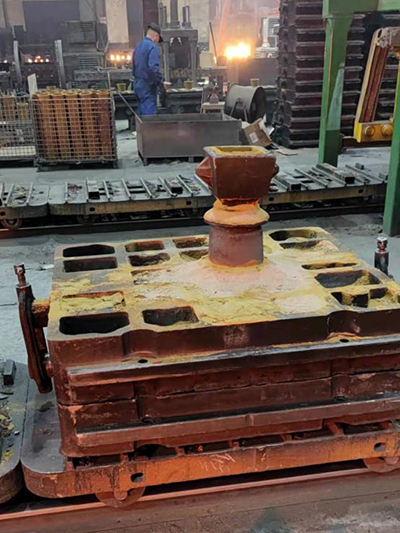Understanding Sand Casting and Its Various Sand Types
Sand casting is a versatile and widely-used manufacturing process that involves pouring molten metal into a sand mold to create metal parts and components of various shapes and sizes. This process is not only economical but also allows the production of complex geometries that would be difficult to achieve with other manufacturing techniques. Central to the effectiveness of sand casting are the different types of sand used, each serving distinct purposes and contributing to the final quality of the cast product.
Types of Sand Used in Sand Casting
1. Green Sand Green sand is the most common type used in sand casting. It is a mixture of silica sand, clay (typically bentonite), water, and other additives. The term “green” refers to the fact that the mold is not baked or cured before metal is poured; instead, it retains moisture. Green sand is known for its excellent molding properties, as it provides good strength and collapsibility. Its ability to retain moisture helps in improving the surface finish of the castings. This type of sand is particularly suitable for small to medium-sized castings and is widely used in automotive and machinery production.
2. Dry Sand Dry sand molds are made by allowing the sand to dry out before casting begins. This sand is mixed with a bonding agent and can produce a more durable mold. Dry sand is typically used for larger castings since it can withstand higher temperatures and is less prone to deformation during the pouring of molten metal. The main drawback is that it requires additional processing time to ensure the mold is sufficiently dry.
3. Sodium Silicate Sand Sodium silicate sand, also known as water glass sand, uses sodium silicate as a binder. This type of sand can be activated with carbon dioxide to harden the mold. Sodium silicate sand molds can achieve finer details and produce excellent surface finishes. They are often used in industries that require precision and high-quality cast finishes, such as aerospace and medical devices. However, the complexity of the setup can make it more costly compared to traditional green sand molds.
sand casting sand types

4. No-bake Sand No-bake sand, or cold-box sand, is a type of sand mold that cures at room temperature without the need for heating. This process typically involves a chemical binder that activates when exposed to catalyst gas. No-bake sand offers high dimensional accuracy and excellent surface finishes. It is suitable for casting intricate shapes and can be reused multiple times, thus reducing material waste.
5. Lost Foam Sand Lost foam sand casting uses a foam pattern that is buried in sand. When molten metal is poured over the foam, it vaporizes, leaving a cavity in the shape of the pattern. This method is particularly effective for producing complex geometries with minimal finishing required. The main advantage of lost foam casting is the ability to reduce machining costs and waste, though it may require specific conditions to control the vaporization of the foam.
Choosing the Right Sand
Selecting the appropriate type of sand for a casting project depends on various factors, including the size and complexity of the part, the type of metal being cast, and the required surface finish. Engineers and foundry professionals must consider the thermal properties, strength, and reusability of the sand, as well as the cost-effectiveness of the chosen materials.
Each type of sand offers unique benefits and potential drawbacks, making it imperative for manufacturers to thoroughly assess their needs and capabilities. The ongoing advancements in sand casting technologies and materials also promise to enhance the performance and efficiency of this traditional method, ensuring its relevance in modern manufacturing.
In conclusion, the choice of sand in sand casting is crucial for delivering high-quality products that meet industry standards. Understanding the various types of sand, such as green sand, dry sand, sodium silicate sand, no-bake sand, and lost foam sand, empowers manufacturers to make informed decisions that enhance their production processes and outcomes. As the industry evolves, continuous research and development will further refine these materials and techniques, solidifying sand casting's important role in manufacturing.
Post time:دېكابىر . 12, 2024 10:04
Next:how sand casting works
